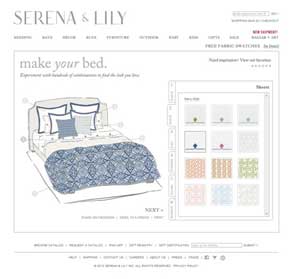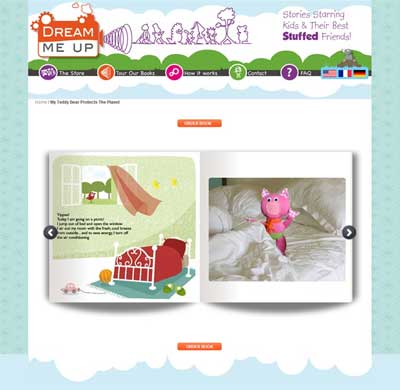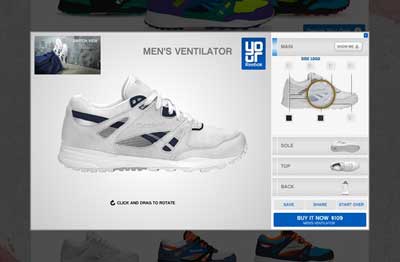Multichannel shopping experiences are raising consumer expectations. Consumers are accustomed to shopping for and buying whatever they need whenever they need it, and competition among mass-produced items is intense.
Offering consumers customized products, or a customized “experience,” is one powerful way to differentiate your brand, build customer loyalty and drive additional revenue.
For the most part, producing made-to-order products has been time- and cost-prohibitive for mainstream markets. But more flexible manufacturing methods and online tools that engage customers in creating their own configurations from mass-produced items have opened up a range of viable, profitable options for delivering the customized experience that consumers crave without the costs and complicated manufacturing processes associated with custom-made products.
With more than 35% of consumers in North America interested in specifying features and purchasing customized products, mass customization represents a huge growth opportunity.
Top- and Bottom-Line Benefits
Giving consumers choices lets them express their individuality. This, in turn, helps position you as the sole or go-to source for products that feel custom-made and unique. Consumers also view customized products as better because the products better fit their actual needs.
For the merchant, these value-addeds translate into powerful marketing advantages—including supporting higher price points.
A review of merchants employing online configurator tools confirmed that offering consumers the ability to “create” and view customized products in real time results in higher conversion rates, significant sales increases (in some cases more than 80%), average-order-size increases of up to 20%, and shortened sales cycles.
In addition, the ability to view customized products before ordering can reduce returns by up to 33%, and the use of dynamically generated “virtual samples” (that let customers evaluate a product before it’s manufactured) can reduce costs up to 50%.
Further, being able to track customer choices and trends through online configuration tools enables retailers to change product options nimbly and avoid excess inventory.
Mass Customization Options
- Bundling: In this variation, the customer chooses from standard, pre-made items to create a customized overall package, such as a gift basket of food items. The items are then simply picked from inventory, packed and shipped.
Serena & Lily uses this approach to let customers create custom bedding bundles by selecting from a large collection of ready-made bedding products.

- Faux customization: Products with a moderate number of options and configurations can be mass produced in all possible combinations and kept in inventory. For the consumer, the array of choices provides a simulated or perceived customization experience.
- Personalization: Personalization—adding customer-specified elements to mass-produced, in-inventory items—creates a strong emotional connection between the customer and the product, transforming a standard product into something special.
Monogramming, for example, has long been a key differentiator for many retailers—Golfsmith is one good example. And digital technology has spawned numerous e-retailers offering large arrays of items—T-shirts and all kinds of apparel, coffee mugs, posters, pet accessories, you name it—that can be customized with customer-chosen images and messages (Zazzle, CustomInk and Cafe Press, to name a few).
Today, the possibilities for cost-effective personalization seem almost limitless.
In the publishing/content realm, DreamMeUp.com allows parents to create a unique, highly personalized book by inserting photo images of a child’s favorite toy or blankie (and the child’s own image, if desired), choosing a story line, and filling in the names of the toy and the child. This site offers a simple, enjoyable creation process. It also shows users samples of books that make the necessary steps involved (like taking some photos) clear before parents begin the creation/personalization process. This sets appropriate expectations and generates more interest in the products.
Another intriguing example: WhiskyBlender.com allows customers to create custom blends of Scotch, name them, and even create their own labels for the bottles, all in a simple four-step process.

- Custom manufacturing: Customers choose from a selection of standardized component parts to create customized products that are manufactured using mass-production methods.
Reebok.com deftly turns what could be a confusing or frustrating selection process into a user-friendly, immersive experience with 3-D rotation and real-time, photo-realistic renderings of the shoe as it is being customized.
Success Hinges on the Configurator
Reebok.com illustrates a critical point: Success in capturing mass customization opportunities hinges on providing consumers with a product-configurator tool that enhances their customization experience, instills confidence in the process, and ultimately ensures satisfaction with the purchase.

Here’s how to go about it:
- Focus on the customer experience. This can be even more important than brand loyalty in the purchase decision.
- Keep the experience simple. Although younger consumers are more tolerant of more complex experiences, reaching a broad consumer audience requires simple, engaging configurator experiences.
- Provide accurate visualizations of the product design. When asked what they liked most about positive configurator experiences, customers cite the visualizations.
- Provide inspiring starting points. Customers don’t want to start from scratch. Many are daunted by the absence of constraints and structure. Given a choice, 75% of customers prefer to start with a pre-configured product that serves as a suggestion.
In the years ahead, consumer expectations will drive ever-greater customization of products, services and experiences. All signs point to mass customization methods becoming more the rule than the exception.
David Hogue is VP experience design (Fluid fellow) for
Fluid, Inc.